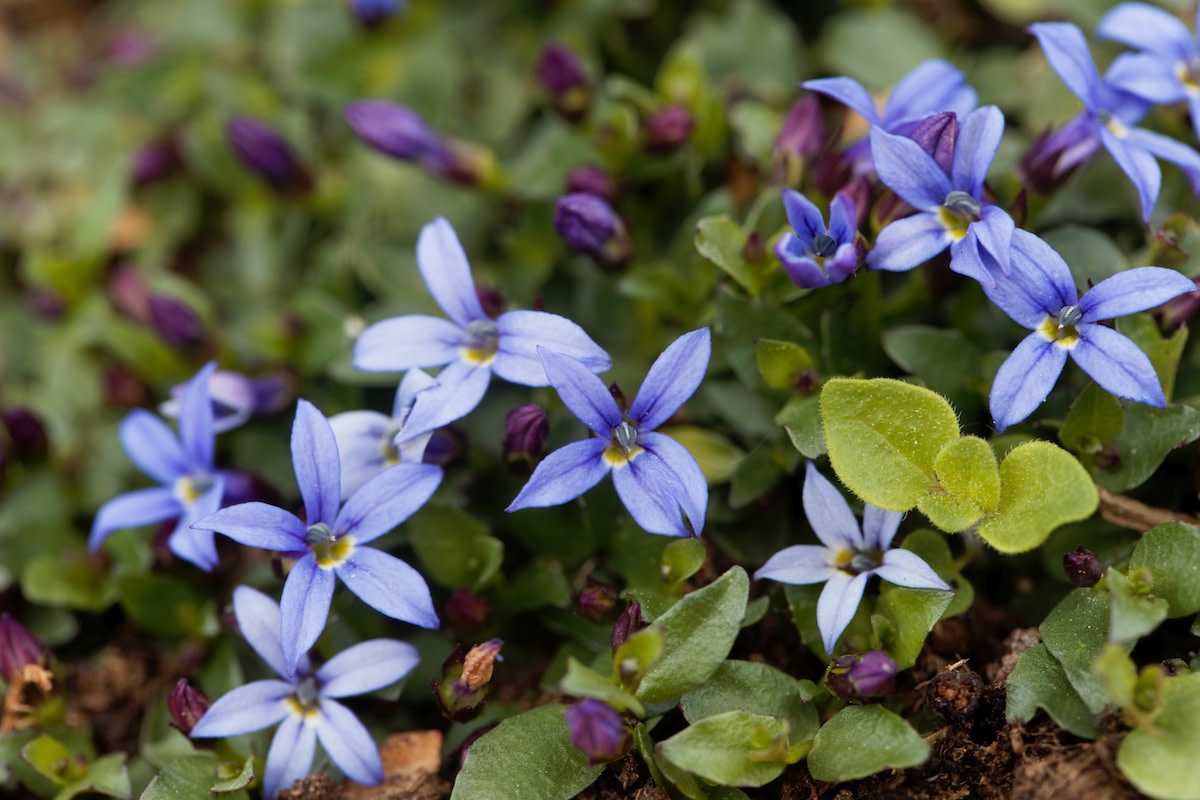Blue Star Creeper Care Tips: How to Grow Blue Star Creeper
Written by MasterClass
Last updated: Oct 7, 2021 • 2 min read
The blue star creeper plant is a low-maintenance houseplant and landscaping plant known for displaying bright green leaves and blue flowers. Learn how to grow and care for blue star creepers.
Learn From the Best
What Is Blue Star Creeper?
Blue star creeper (Isotoma fluviatilis, formerly Laurentia fluviatilis) is an herbaceous perennial plant from the Campanulaceae family commonly grown as ground cover. Swamp isotome, creeping phlox, matted pratia, and trailing pratia are all alternative common names for blue star creeper. Native to Australia and New Zealand, these plants flower in light blue to deep purple and display a dark green foliage.
Blue star creepers typically reach a maximum height of five inches. In addition to making good ground-cover plants, blue star creepers are attractive choices for rock gardens. Some gardeners even use blue star creepers as lawn substitutes. As a lawn alternative, blue star creepers require no mowing or other traditional lawn care. The blue star creeper plant is also capable of withstanding heavy foot traffic.
How to Grow Blue Star Creeper From Seed
Consider the steps involved in growing blue star creeper plants from seed.
- 1. Harvest: Take blue star creeper seeds from established plants during the growing season in late spring. Purchase seeds from a nursery if mature plants are not available.
- 2. Sow: Sow the seeds in a seed starter mix in a shallow container. Keep the seeds moist.
- 3. Sprout: Place the seed tray in a location that receives partial sun. The seedlings should sprout within fifteen days.
- 4. Plant: Once you have blue star creeper seedlings, plant them in moist soil with effective drainage. Pay attention to spacing—plant your seedlings between eight and ten inches apart.
How to Care for Blue Star Creeper
Blue star creeper plants are easy to care for if you follow some simple strategies.
- 1. Light: Ideally, place your blue star creeper plants in an area that receives full sun for the majority of the day and light shade in the afternoon. These plants will also tolerate partial sunlight or partial shade, but a lack of sunlight may mute the color of their flowers.
- 2. Temperature: Blue star creepers grow best in USDA hardiness zones six through nine. These plants are frost-hardy but thrive in warmer temperatures. After a dormant winter season, the growing season picks up again from early spring to fall.
- 3. Soil: Ideally, plant your blue star creeper in alkaline soil that drains well. Avoid overwatering your plant if you have heavy clay soil. Alternatively, add a layer of mulch around your plants to retain moisture if the soil becomes dry quickly.
- 4. Watering: Maintaining moist soil is important, but avoid overwatering your blue star creepers. Blue star creepers can survive in spells of dry weather and have moderate watering needs.
- 5. Fertilizer: Fertilize your blue star creeper once each growing season. Avoid overfeeding, as growth rates can quickly become invasive.
- 6. Pruning: Prune your blue star creeper plants once annually. Late fall is a good time for pruning. Manually pull up overgrowth as needed.
- 7. Propagating: To propagate blue star creeper, split the root ball with a sharp pair of gardening shears. Take the divided root balls and plant them right away in the ground or in a pot.
Learn More
Grow your own garden with Ron Finley, the self-described "Gangster Gardener." Get the MasterClass Annual Membership and learn how to cultivate fresh herbs and vegetables, keep your house plants alive, and use compost to make your community—and the world—a better place.
